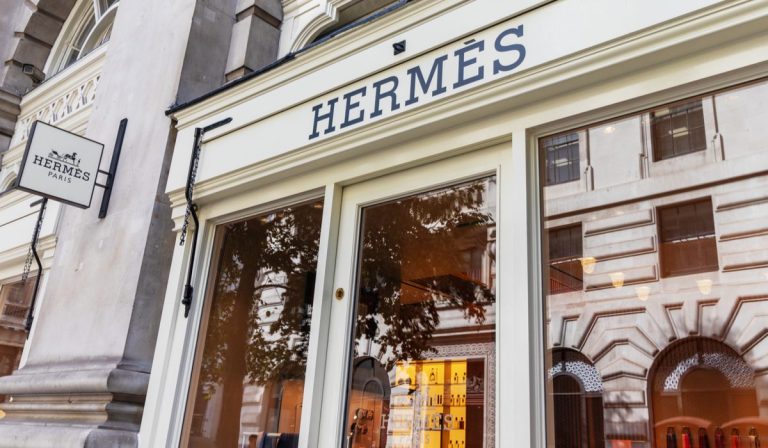
Researchers at Spain’s Universitat Politècnica de Catalunya recently published a study showing that reusing 1kg of clothing could save 25 kg of carbon dioxide emissions.
Scaling these findings up and it’s clear that extending the life of garments could dramatically reduce the environmental impact of the global fashion industry. In fact, the study found that doubling the lifespan of every item of clothing would reduce the entire sector’s greenhouse gas emissions by 44%.
In light of the major emissions savings to be made, and as part of its Strategy for Sustainable and Circular Textiles, the EU has outlined its plans to clamp down on fast fashion and extend the life of clothes.
But so far, the circular fashion movement has been pioneered by resale platforms like Depop, The RealReal, Vinted and Vestiaire Collective.
Related: How Vestiaire Collective Uses BNPL to Make High-End Fashion Accessible to All
In the case of California-based The RealReal and Paris-based Vestiaire Collective, the proposition is uniquely geared toward the luxury market, with each company employing professionals to authenticate pre-owned items and flag any counterfeits.
But while these companies promise to weed out counterfeit goods and lend a degree of credibility to the resale process, that hasn’t stopped fake goods from slipping through the net.
In the case of The Real Real, accusations of a subpar authentication process have been leveled against the platform by designer brands themselves. In 2018, for example, French fashion house Chanel filed a suit against the company alleging that it listed counterfeit Chanel products on its website and misled customers into believing that Chanel had endorsed their products on The RealReal.
Explaining their objections at the time, a Chanel spokesperson said that the ability to accurately authenticate “genuine Chanel-branded goods could only reside within Chanel […]. When this retailer lets its customers believe its so-called experts can authenticate genuine Chanel-branded goods, it deceives them.”
Taking Luxury Resale In-House
For high-end designers, delegating the certification of pre-owned products to third parties poses several risks, including damaging brand reputation and the possibility of missing out on a profitable revenue source.
As a result, a growing number of luxury brands have launched in-house resale channels to guarantee customers are getting the real deal.
Read more: Luxury Resale Is Booming, But Some Luxury Brands Fear Cannibalization
For example, the Balenciaga Re-sell Program, launched in September of this year, allows consumers to drop off their unwanted items at a nearby store or arrange for collection. Balenciaga takes care of authentication and pricing before they are photographed and listed on a network of global marketplaces.
See more: Luxury Resale Competition Spikes as ‘What Goes Around’ Opens Amazon Storefront
For Balenciaga, entering the resale space was enabled by a partnership with Reflaunt, a Portuguese firm that allows companies to outsource collection and distribution. Reflaunt has also built a white label solution for fashion houses interested in creating their own branded resale marketplaces instead of relying on existing platforms. A similar proposition is offered by the U.S.-based firm Archive.
Read also: Luxury Brands Rush to Own the Resale Experience
For those that don’t want to build their own resale marketplace, there’s always the option to partner with an existing platform as Burberry, Kering-owned Gucci and Stella McCartney have chosen to do through tie-ins with The Real Real.
Resale Is Not for All
Despite the increasing growth and interest in secondhand retail, some brands have snubbed the luxury resale market altogether.
In a first-half earnings presentation this year, Hermès’ CEO Axel Dumas said engaging with the resale market “would be to the detriment of our regular client who comes to the store.”
Bruno Pavlovsky, president of Chanel and its fashion arm, reportedly shared similar sentiments with WWD last year: “We’ve spent the last 20 years securing [control of our distribution], so we’re not going to give it up now with partnerships in the secondhand market.”
And as PYMNTS reported, it’s a position also echoed by Antoine Arnault, head of image and environment at LVMH. “We have such long-lasting products and we repair them. We, for the moment, will stick to that and [propose as many] beautiful new products, as creative and thrilling new collections as we can. For the moment, we will stay away from that secondhand market.”
But that’s not to say brands are not willing to dip their toes in the booming market. In fact, despite Arnault’s comments, LVMH announced in April of last year the launch of Nona Source, a “re-sourcing” platform through which it sells excess and deadstock materials to emerging fashion brands across Europe.
“Nona Source is a concrete solution to address the challenges and opportunities of circularity, a key pillar of LVMH’s environmental strategy,” the company said at the time.
For all PYMNTS EMEA coverage, subscribe to the daily EMEA Newsletter.